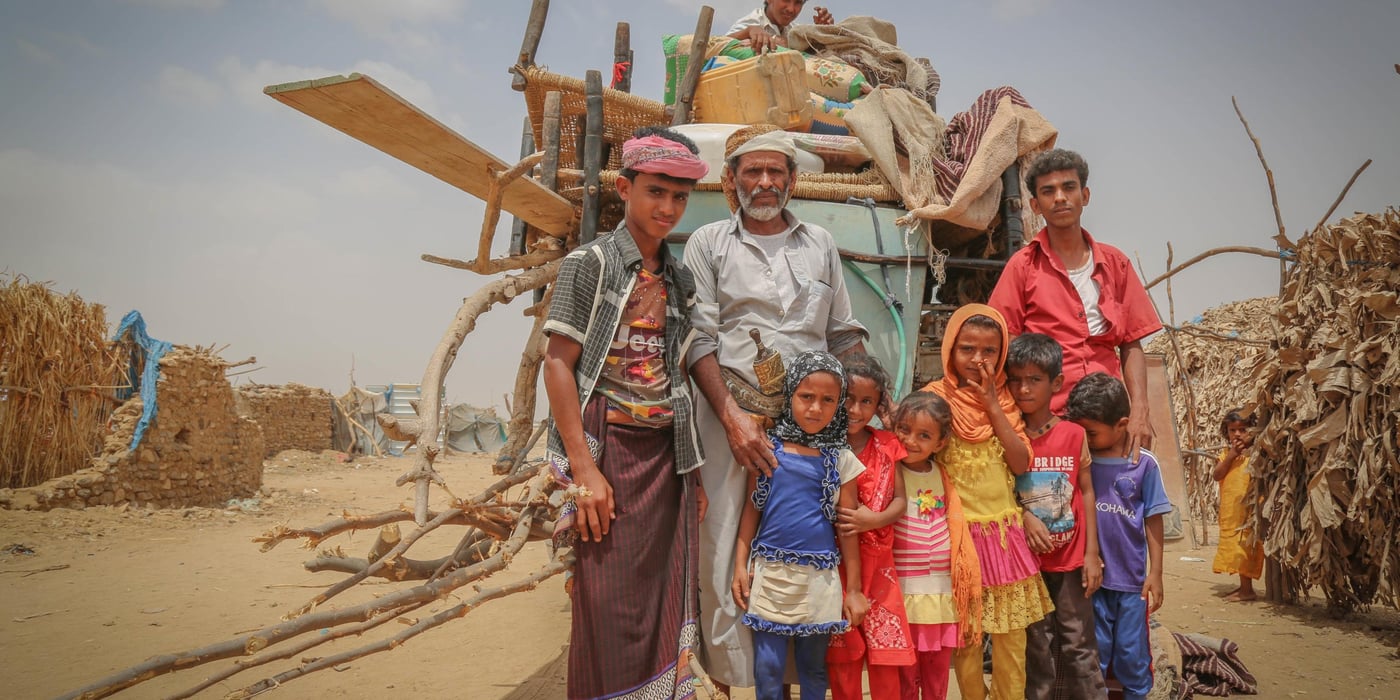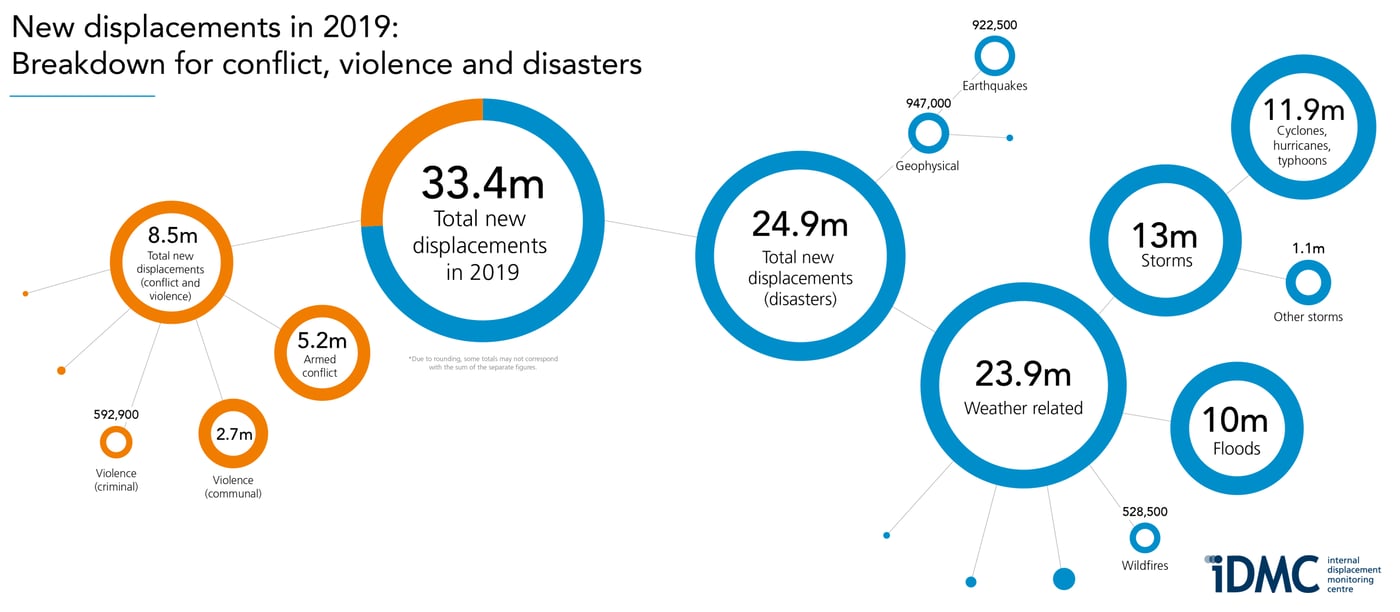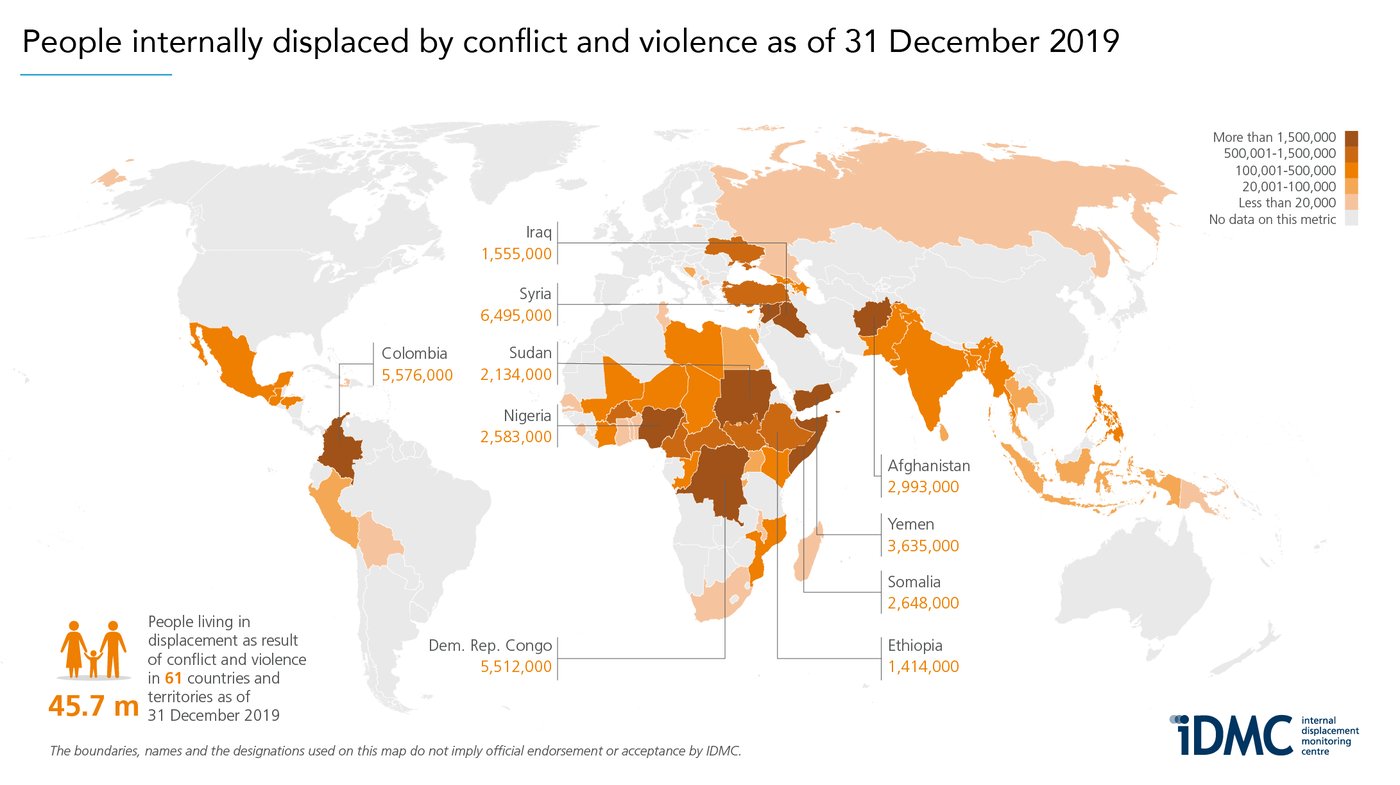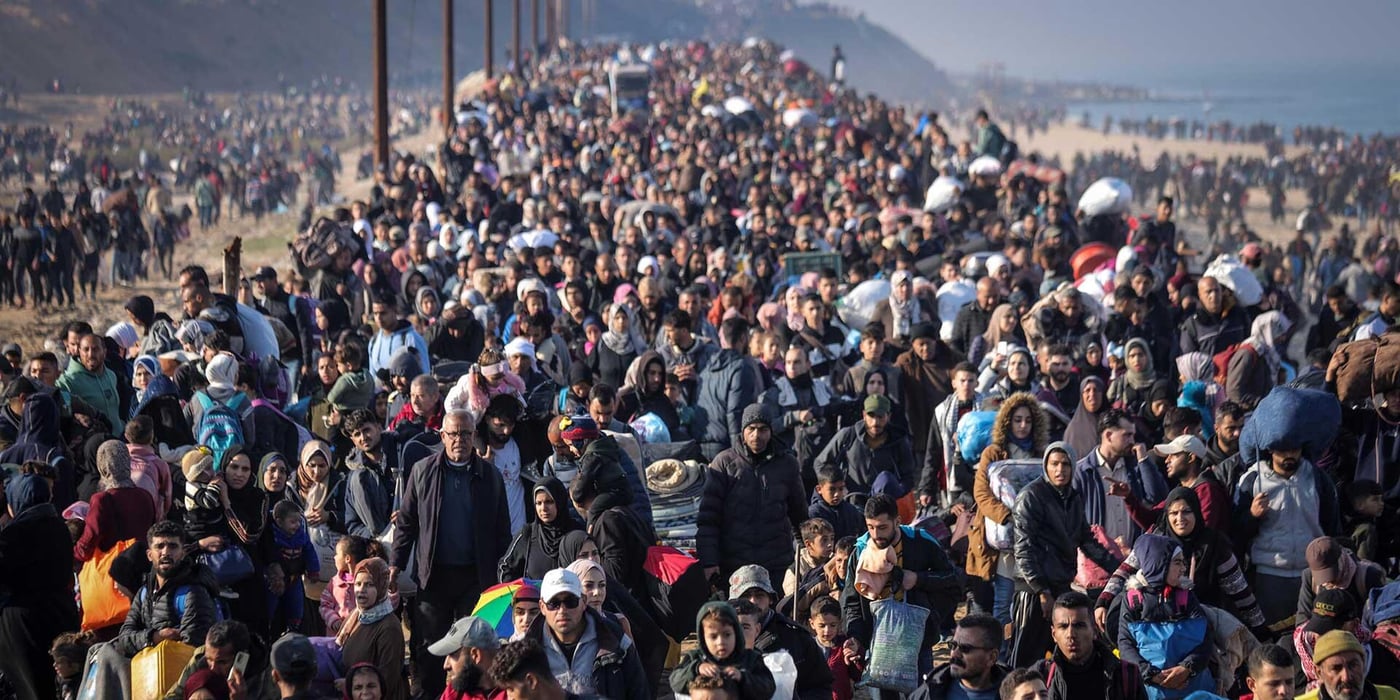
A total of 8.5 million people were forced to flee within their own country by conflict and violence during 2019, according to a new report from the Internal Displacement Monitoring Centre (IDMC).
Although this is a decrease of 2.3 million on last year’s figure, the total number of people displaced by conflict and violence increased to 45.7 million. This is the highest number ever recorded and 4.4 million more than the 2018 figure. There are twice as many internally displaced people today as there were 20 years ago. Many end up in trapped in a life of displacement for decades, and a large number are forced to flee several times.
As we launch our report today, let us remember that behind every statistic is a life upturned, a hope shattered, a future compromised. In the current global context, IDPs are more vulnerable than ever before.Alexandra Bilak, Director of IDMC
Disaster displacement on the rise
A total of 24.9 million people were displaced as a result of disasters during 2019. This is an increase of 7.2 million compared to the previous year and the highest level since 2012. At the end of 2019, 5.1 million of these people were still registered as displaced.

View a full-size version of the graphic here.
“Year after year, conflict and violence uproot millions of people from their homes. Collectively, we are failing by epic proportions to protect the world’s most vulnerable. Politicians, generals and diplomats must rise above stalemates and seek ceasefires and peace talks, not guns and grenades. In this age of coronavirus, continued political violence is utterly senseless,” said Jan Egeland, Secretary General of the Norwegian Refugee Council.
Syria continues to suffer
Syria tops the list of countries with the highest number of newly displaced people due to violence and conflict in 2019, with 1.8 million, followed by the Democratic Republic of the Congo with 1.7 million and Ethiopia with 1.1 million. Syria was also the country with the highest total of internally displaced people at the end of the year, with 6.5 million. Colombia with 5.6 million and DR Congo with 5.5 million were second and third on the list.

View a full-size version of the graphic here.
Asian countries account for most of the people forced to flee by disasters in 2019. India heads the list with 5 million, followed by the Philippines (4.1 million), Bangladesh (4.1 million) and China (4.0 million). Of the 24.9 million people who were displaced by disasters worldwide, over 23.9 million were forced to flee by extreme weather events, while just over 900,000 fled as a result of earthquakes and volcanic eruptions.
“Internally displaced people are often highly vulnerable people living in crowded camps, emergency shelters and informal settlements with little or no access to healthcare,” said IDMC’s director, Alexandra Bilak. “The global coronavirus pandemic will make them more vulnerable still. It will compromise their already precarious living conditions, by further limiting their access to essential services and humanitarian aid.”
Some positive trends
There are also some positive trends to be found in this year's report. In several countries we are starting to see the results of initiatives designed to prevent people being forced to flee their homes.
In many parts of Asia, lives have been saved because evacuations have been carried out in advance of disasters, and because there are effective warning systems that reduce the extent of disaster damage. In Indonesia, Mali and Sri Lanka, national systems have been put in place to collect and analyse displacement data, and long-term work has started in Ethiopia and Somalia to develop similar systems.
In addition, the UN Secretary-General has established a high-level panel for internal displacement, showing a global political commitment, and three new African countries have recently ratified the Kampala Convention, which is Africa’s unique and legally binding framework for internal displacement.


